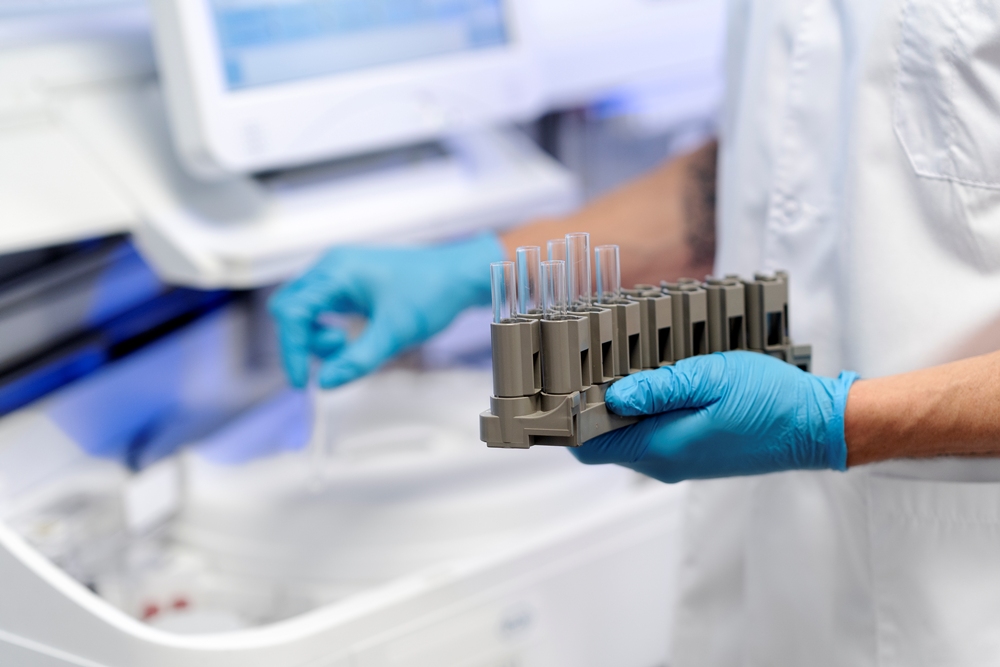Entrepreneur
What the Silicon Valley Bank UK’s HSBC rescue deal could mean for femtech start-ups
The deal stabilised the situation for 3,300 UK customers who had roughly £7bn worth of capital locked up in SVB

British femtech start-ups are breathing a sigh of relief, after the UK government has struck a last-minute deal for HSBC to buy Silicon Valley Bank’s UK operations, saving thousands of tech companies from big losses after the biggest bank failure since 2008.
The deal, securing the deposits of around 3,300 UK customers, cost HSBC £1 and followed talks between Downing Street, the Bank of England and HSBC bosses over the weekend.
Noel Quinn, HSBC Group CEO, said the acquisition made excellent strategic sense, enhancing the group’s ability to serve innovative and fast-growing firms.
Pilar Fernandez Hermida, founder and CEO of the business consultancy platform i-Expand, says: “This quick intervention has stopped a contagion effect.
“The tech sector is very important in the UK and this rescue will protect thousands of jobs and companies. It will not be business as usual, but the damage will be contained.”
According to Politico, SVB’s UK wing oversaw roughly US$7bn in deposits from 3,000 groups — from lowly start-ups to high-flying venture capitalists — across the tech industry.
“The acquisition keeps alive the potential the positive impact innovative life sciences and tech businesses, including in health tech, femtech and medtech, are collectively making in the world,” Dr Poonam Malik, head of investments at the University of Strathclyde and a member of Skills Development Scotland, tells Femtech World.
“All this without a penny of taxpayers’ money being spent against the backdrop of a biggest ‘cost of living crisis’, with no market panic generated and dodging a ‘black swan’ moment in the economy bringing back memories of 2008.”
However, she says a lot of stress and shock has already been absorbed.
“The most immediately affected are individuals [impacted by] payroll disruptions, delays to receiving paychecks and necessary money that could be used for rent or mortgage payments, groceries, childcare and other bills.
“Risk is particularly true for start-ups and is also the case for start-up vendors that may see their invoices running over agreed payment terms.”
Now is the time for founders to change things up to better prepare for the future, say experts.
“A bit more of a ‘reflective practice’ and letting the situation play out is something we need to teach our entrepreneurs more,” explains Malik.

“Opening multiple bank accounts, while may be boring and take time, it will now find entry in the risk register and become routine part of risk mitigation plan for building a company in the future.
“Building companies is hard, but learning from this weekend’s experience and knowing you are doing it with a community of awesome people would make it much easier.
“It will be interesting to see how HSBC, which at its heart is a pretty conservative institution, adapts to this influx of techy, agile and creative set of customers.”
Thomas Panton, founder and CEO of the online platform Canopey, says “it is not all roses”.
Last year, HSBC came under heavy criticism when it was revealed it had invested an estimated US$8.7bn (£6.4bn) into new oil and gas in 2021.
“The most recent IPCC report made it abundantly clear that humans are having an unequivocal impact on the climate,” says Panton.
“Campaigns by organisations like Greenpeace have been pivotal in bringing awareness to these investments and the negative impact they’re having.
“If we don’t take drastic action then not only will we continue to see an increase in human-induced disasters, but also huge amounts of migration, economic fallout and massive biodiversity loss which will have its own knock-on impacts.
“Who we bank with and where we store our money has a massive impact on the climate. Start-ups have a huge power collectively to impact where investment goes and what it is supporting,” he adds.
“By focusing on easy-to-change things like bank accounts, server hosts, electricity providers, we can shift the impact to be more positive than negative.”
Michael Jackson, venture partner at Multiple Capital, says: “The hard truth is start-ups and entrepreneurs don’t always have the liberty to be so picky when choosing their bank.
“If you can, great, but the priority needs to be choosing the bank which provides the most dependable services to your company.”
As the demise of Silicon Valley Bank marked the largest bank failure in the US since the global financial crisis, he says questions need to be asked.
“Regulations need to reviewed and possibly changed. Case in point, in 2018 some provisions of Dodd-Frank were relaxed which specifically eased regs on regional/mid sized banks.
“The CEO of SVB lobbied hard for those changes. That, I think, needs a hard looking at.”
News
SheMed raises €43m to scale UK operations

London-based women’s health platform SheMed has raised €43m to expand its UK operations and further develop its personalised healthcare platform.
The company, founded by sisters Olivia and Chloe Ferro in April 2024, will use the investment to scale its medical and technology teams, strengthen clinical infrastructure and enhance its data-driven systems.
SheMed offers weight management programmes using GLP-1 drugs — treatments that mimic a natural hormone regulating blood sugar and appetite — alongside wellness tracking and 24/7 support through its digital platform.
Olivia Ferro, co-founder and chief executive of SheMed, said: “For more than a decade, I searched for answers to an undiagnosed health issu.
“As a GLP-1 patient myself, I know how transformative the right diagnosis and treatment can be.
“We built SheMed to give women the personalised support I struggled to find: care that listens, understands and empowers.”
The funding comes amid a broader wave of investment in UK and European health technology, particularly in preventative care and women’s health.
Other UK-based companies in similar areas have also raised significant sums this year, including Numan, which secured €51.6m to expand its digital healthcare platform into female health, and Hormona, which raised €7.8m for its AI-driven hormone health tracking solution.
Related UK ventures such as Perci Health and CoMind have also attracted new funding for personalised, data-led healthcare models.
According to analysis by EU-Startups, UK start-ups have raised about €14.7bn so far in 2025, signalling strong investor confidence in the country’s innovation sector.
The new investment will also fund SheMed’s research and patient-experience initiatives, aimed at improving access to personalised care for women across the UK.
Later this month, SheMed plans to publish results from what it describes as the first female-focused GLP-1 clinical study.
The findings are expected to reveal how GLP-1 medications affect women’s hormonal and metabolic responses, helping to refine future treatment approaches.
Insight
How femtech can navigate the EU medical device and AI rules

By Xisca Borrás, Partner – Life sciences regulatory and Ellie Handy, Senior Associate – Life sciences regulatory, Bristows
As femtech is intrinsically linked to health needs, a key question for femtech products is whether they are regulated as medical devices or merely consumer products.
Additionally, many femtech products are embracing the use of artificial intelligence (“AI”).
Therefore, another key question is whether products using AI will be regulated as “high-risk” AI systems under the EU’s new AI legal framework.
This article looks at when femtech apps and software qualify as medical devices in the EU and how the medical device and AI legal frameworks interact.
What is a software medical device?
The definition of “medical device” in the EU’s Medical Device Regulation 2017/745 (the “EU MDR”) includes software, used alone or in combination, that is intended by its legal manufacturer for a medical purpose.
These medical purposes are listed in the EU MDR and include (amongst others):
- diagnosis, prevention, monitoring, prediction, prognosis, treatment or alleviation of disease;
- diagnosis, monitoring, treatment, alleviation of, or compensation for, an injury or disability; and
- control or support of conception.
The legal manufacturer is the person that puts their name/branding on the device, and takes responsibility for it.
Whether software is considered a medical device will depend on whether the manufacturer states it has a medical purpose in the relevant documentation/materials.
The EU MDR defines intended purpose as “the use for which a device is intended according to the data supplied by the manufacturer on the label, in the instructions for use or in promotional or sales materials or statements and as specified by the manufacturer in the clinical evaluation” [emphasis added].
What is the test for qualifying as a medical device in the EU?
There is a selection of guidance documents that can assist you in determining whether a product should qualify as a medical device.
We summarise some of the key guidance below:
- MDCG 2019-11 rev.1
Under the EU MDR, the Medical Device Coordination Group (“MDCG”) has published guidance on the qualification and classification of software as a medical device.
It sets out five decision steps to help determine if a piece of software is a medical device in the EU. The steps are:
- Step 1: Is the product software?
- Step 2: Is it standalone software (e.,it is not an accessory nor driving/influencing the use of a hardware device) and does it not fall within Annex XVI[1]?
- Step 3: Is it performing an action on data beyond storage, archival, communication, simple search or lossless compression?
- Step 4: Does it act for the benefit of an individual patient?
- Step 5: Does it have a medical purpose (as set out in the medical device definition)?
If the answer to all five questions is yes, it will qualify as a medical device.
In this case, manufacturers will have to ensure they comply with the pre-market requirements set out in the EU MDR before they can place the software medical device on the market.
Notably, they will need to set up a qualify management system, compile a technical file, undergo the appropriate conformity assessment and affix a CE mark.
Importantly, the manufacturers would also need to consider post-market requirements, such as having a post-market surveillance system and undertaking post-market vigilance.
- Other relevant guidance
The MDCG has also published a Manual on borderline and classification of medical devices under the EU MDR.
Additional sources of guidance may also be available from national competent authorities.
The legal manufacturer could also look at examples of other products already on the market to see how they are regulated (e.g. looking at EUDAMED).
Although, we would caution anyone relying too heavily on the regulation of other products as there is no guarantee they are compliant.
What if you’re not a medical device?
If the software does not qualify as a medical device, the product will not have to comply with the EU MDR.
However, the manufacturer should be careful about how it promotes its product and the claims it makes about it because, as discussed above, a medical device is defined based on the manufacturer’s intended purpose.
Let’s take the example of a mere period app.
Using it for logging period dates, tracking ovulation, and predicting future cycles has no medical purpose and is therefore not a medical device.
However, if its manufacturer recommends this piece of software for contraception and/or to support conception it will suddenly have a medical purpose and so, it would qualify as a medical device.
As such, the manufacturer would either have to bring the device into conformity with the EU MDR or take action to change the promotional materials to remove the medical claims.
Interaction between medical devices and AI legal frameworks
Under the EU MDR, devices are assigned risk classifications.
For the lowest risk devices (Class I medical devices), the manufacturer can self-certify compliance with the EU MDR prior to the product being placed on the market or put into service in the EU.
However, high risk devices (Class IIa or above medical devices) must undergo a third party conformity assessment carried out by a notified body.
Notified body conformity assessments require a detailed review of the manufacturer’s quality management system, technical documentation, systems and procedures.
The process will often take more than a year to complete.
Additionally, manufacturers have to grapple with ongoing burdens such as vigilance and post-market surveillance.
Under the EU MDR, most software as a medical device will be classified as a Class IIa or above.
Like the EU MDR, the EU’s Regulation (EU) 2024/1689 (the “AI Act”) also distinguishes between AI systems that pose different levels of risk.
The AI Act imposes onerous obligations on “high risk” AI systems, including in relation to accuracy, transparency, risk management, data quality and governance, and human oversight.
Although there is some overlap between the EU MDR and AI Act requirements, many are new AI-specific obligations.
These pose a significant additional regulatory burden, increasing the complexity and cost of compliance for stakeholders.
Notably, the risk classification of an AI system that is itself, or is included in, a medical device is linked to the device’s classification under the EU MDR. Under the AI Act, AI systems are classified as “high risk” systems if:
(a) the AI system is a safety component of a medical device or the AI system itself is a medical device; and
(b) the medical device is required to undergo a third-party conformity assessment under the EU MDR.
Therefore, low risk medical devices (i.e., Class I medical devices) that are self-certified cannot be “high risk” AI systems.
Whereas, any device that requires a notified body to perform its conformity assessment will be a “high risk” AI system, and so will be subject to the additional AI Act requirements.
Unfortunately for those wishing to avoid the “high risk” AI system requirements, there are relatively few Class I devices under the EU MDR.
Therefore, the majority of medical devices that are an AI system or have an AI system as a safety component will qualify as a “high risk” AI system.
One notable example of a Class I device is software intended to support conception by calculating the user’s fertility status based on a validated statistical algorithm.
If this kind of software medical device is also an AI system, it would not be classed as a “high risk” AI system, so it would not be subject to the more onerous requirements in the AI Act.
However, the manufacturers of these devices would need to carefully consider any product developments that add additional functionality, as this can impact the risk classification of the product under both the EU MDR and AI Act.
For example, if the manufacturer added functionality to the Class I device so it could also be used as a means of contraception, it would become a Class IIb medical device and would need a third party conformity assessment.
In turn, as the software is also an AI system, this would mean the AI system would be considered “high-risk” and be subject to additional regulatory requirements under the AI Act.
Whilst AI has the potential to provide tremendous benefits for femtech, it also triggers additional complexity that can be time-consuming and costly to navigate.
It is important to get it right in terms of compliance in order to maintain consumer trust, avoid regulatory penalties, and pave the way for long-term success and viability.
News
IVF in transition: 2025 realities and what device manufacturers must do now

FinDBest IVF is a global B2B platform that connects manufacturers of fertility and reproductive health devices with IVF-specialist distributors in over 150 countries. We simplify global expansion, regulatory pathway planning, and distributor onboarding.
Each year, the European Society of Human Reproduction and Embryology (ESHRE) Congress reveals not just clinical updates, but also clear signals about where the IVF market is heading.
In 2025, Circular Communications compiled a focused commercial and product roadmap briefing from the event, kindly shared recently by Dr Georg Griesinger on Linkedin.
What follows is a practical breakdown of their insights—designed for medical device manufacturers and clinical users who need to make fast, evidence-based business and product decisions:
The Six Shifts Reshaping IVF
The IVF landscape in 2025 is not simply evolving—it is undergoing structural change.
Six key forces are reshaping how medical devices are adopted, evaluated, and purchased. Manufacturers who adapt early will find more predictable paths to market.
Those who do not risk falling behind as clinics tighten their criteria.
Cost pressures are now the central constraint
IVF remains financially inaccessible for large segments of the population.
In many countries, patients are still paying out of pocket.
The result is a growing preference for solutions designed around total cost of ownership (TCO).
That means not just upfront purchasing price/cost, but reusability, reliability, throughput, maintenance needs, and training time.
Products that align with capital expenditure (CAPEX) models and flexible subscriptions—especially those matched to clinic cash flow—are more likely to be adopted.
Growth in mature markets has flatlined
In many high-income countries, the number of IVF cycles per capita has plateaued.
For manufacturers, that means growth must now come from share gain or geographic expansion, particularly into fast-growing regions like Southeast Asia, the Middle East and North Africa (MENA), and Latin America.
But entering these markets successfully requires localising value propositions and working with distributors who understand IVF workflows and regulatory constraints.
Legal and ethical oversight is tightening
Questions about embryo selection, long-term storage, and artificial intelligence (AI) in diagnostics are under increased scrutiny.
For manufacturers, this raises the bar on traceability, audit readiness, and labeling compliance.
Products now need to include support for standard operating procedures (SOPs), as well as detailed logging and audit trails.
These are no longer differentiators—they are minimum requirements.
Patient experience has become a key decision factor
Clinics are under pressure to not only deliver outcomes but also reduce the emotional and cognitive burden on patients.
Devices that simplify communication, reduce the number of steps in a procedure, and help patients understand “what’s next” are increasingly favored.
Clear interfaces, intuitive indicators, and minimal user intervention all contribute to better adoption.
Clinic consolidation is shifting how buying decisions are made
Independent clinics are being replaced or absorbed by multi-site groups (Eg. US Fertility or IVIRMA, owned by KKR).
These groups prioritise enterprise-style purchasing: standardised protocols, centralised training, measurable return on investment (ROI), and clear service levels.
Manufacturers that can offer SOP kits, multi-site onboarding, and enterprise-level value metrics will have a distinct advantage.
Technology alone no longer drives differentiation
Automation, AI, microfluidics, smart incubation systems, and digital integration are becoming standard.
The key to winning adoption now lies in reproducibility, data quality, interoperability, and auditability—not just product specifications.
Clinics expect devices that integrate easily with their digital systems and produce consistent results across different settings.
Each of these shifts presents a challenge, but also a roadmap.
Cost, regulation, technology, and buyer behavior are all converging toward a more structured and evidence-driven IVF market.
Manufacturers who address these realities in their design, pricing, and commercial execution will be best positioned to scale.
Clinical and Technological Frontiers Highlighted at ESHRE 2025
Beyond the market dynamics, ESHRE 2025 spotlighted several areas of clinical innovation that are directly shaping device and diagnostics development.
These themes are not theoretical—they are influencing purchasing, adoption, and regulatory expectations now.
Ovarian stimulation protocols are being rethought As clinics aim for personalisation and patient comfort, the need for smarter diagnostics and more flexible drug delivery systems is growing.
Biomarkers that can predict ovarian reserve and treatment response are informing stimulation protocols, making room for devices that adapt to individual profiles.
At the same time, there is a clear trend toward mild stimulation protocols, which create demand for less-invasive monitoring tools and delivery systems that are intuitive, reliable, and easy to train on.
The ongoing refinement of protocols using gonadotropin-releasing hormone (GnRH) antagonists reinforces the need for workflow-agnostic solutions—those that can fit into varying cycles without adding complexity.
Embryo selection is moving well beyond morphology
Objective, evidence-backed methods are replacing subjective scoring.
One major area of interest is AI-supported time-lapse imaging, which offers the potential to assess embryo viability in a more standardised and reproducible way.
However, clinics are demanding validated tools—classified appropriately as software as a medical device (SaMD), with integration capabilities and clean clinical evidence.
In parallel, non-invasive preimplantation genetic testing (niPGT) is gaining momentum.
Media capable of capturing cell-free DNA (cfDNA), paired with ultra-sensitive genetic testing platforms, could redefine embryo selection workflows.
This is not a future trend—it’s a present R&D priority.
Manufacturers need to plan both the evidence and regulatory strategy from the outset.
Metabolomics and biomarker analysis of culture media are also being explored, particularly where kits can offer clear utility and fit easily into existing lab infrastructure.
Implantation remains a key bottleneck
Even with viable embryos, successful transfer remains challenging.
There is growing interest in non-invasive endometrial diagnostics that can assess uterine receptivity without disrupting workflow.
The market demands tools that are specific, reproducible, and easy to use.
Meanwhile, catheter design continues to influence both outcomes and patient experience.
Ergonomics, atraumatic placement, and consistent delivery are still core drivers of successful transfers.
While less discussed in marketing, this area remains a top priority for clinical users and therefore deserves more innovation attention.
Taken together, these frontiers point toward a product development path that favors integration over novelty, reproducibility over experimentation, and real-world usability over theoretical performance.
It is not just what your device does—it is how it fits into the day-to-day life of clinics under pressure.
Regulatory and Market Access: Build It In, Not On
Global regulatory expectations are rising, and shortcuts are closing.
Product teams can no longer afford to treat compliance as a post-development task. It must be embedded from Day 0.
For software and AI-based tools, classification is tightening across the United States, European Union, and China.
This means developers must create full validation plans early, align endpoints with regulatory expectations, and document cybersecurity and data governance practices before launch.
Post-market surveillance and post-market clinical follow-up are not optional; they need to be built into the development process.
Culture media and reagent products are under increased scrutiny from regulations like the European Union’s Medical Device Regulation (MDR) and In Vitro Diagnostic Regulation (IVDR).
Manufacturers must establish robust quality systems, ensure all labeling is complete and language-appropriate, and be ready to implement unique device identification requirements in every target market.
For connected lab devices, regulatory bodies expect more than just functionality.
They now require detailed documentation of data interoperability, security protocols, and integration capabilities.
Manufacturers should design clean application programming interfaces (APIs) and seamless connectors for hospital and laboratory data systems to make compliance easier—not harder—for clinics.
A practical checklist for manufacturers:
- Confirm software classification and plan validation early for each market.
- Create templates for traceability, labeling, audit logs, and PMS/PMCF.
- Implement cybersecurity and data protection frameworks from Day 0.
- Ensure unique device identification (UDI) compliance for each geography.
- Offer clear integration documents for lab systems (no assumptions).
Strategic Focus Areas for IVF Device and Diagnostics Manufacturers
- Balance cost and innovation
Demonstrate lower total cost of ownership through real-world data. Show how your product reduces maintenance, training time, or consumable use. - Support with evidence, not claims
Build prospective, multi-site clinical studies. Prepare audit-ready documentation: instructions for use, labeling, traceability, and surveillance templates. - Integrate digital and physical
Provide open, secure APIs. Ensure fast and simple onboarding for embryologists and nurses. Focus on reducing clicks, errors, and delays. - Refine embryo selection strategy
Align product claims with validated inputs—whether AI models, cfDNA media, or metabolomic markers. Monitor data drift and revalidate regularly. - Improve uterine receptivity and transfer tools
Support claims with performance data (e.g. time to placement, consistency). Offer quick training modules to accelerate adoption. - Embed regulatory design
Maintain a live matrix of requirements per SKU and market. Don’t delay planning for UDI, cybersecurity, PMS/PMCF. - Sell to enterprise buyers
Offer group-level SOP kits, ROI calculators, and centralised onboarding. Provide remote diagnostics and clear SLAs to reduce downtime. - Speed up market entry through smarter distribution
Use IVF-experienced distributors with proven regulatory capabilities. Shorten time to first order by removing the guesswork.
Key Takeaways
- Total cost of ownership is now the key metric—design around it.
- Patient workflows and clinic processes must be simplified.
- Reproducibility and integration matter more than specs.
- Plan evidence generation around the claims you want to make.
- Prepare for audits with full traceability and post-market tools.
- Offer group-ready commercial packages for multi-site chains.
- Match each market with a localised regulatory strategy.
- Choose distributors who understand both IVF and compliance.
FinDBest IVF: Your Partner in Global Expansion
These insights from ESHRE 2025, as compiled by Circular Communications, offer a compelling glimpse into the future of fertility treatment.
For medical device manufacturers, these trends are direct signals for where to focus R&D, innovation, and market entry efforts.
At FinDBest IVF, we specialise in helping medical device manufacturers navigate the complex global regulatory landscape.
Whether you’re developing cutting-edge AI for embryo selection, next-generation culture media, or advanced cryopreservation devices, we can help you:
- Find regulatory-savvy distributors and license holders.
- Identify partners who understand country-specific timelines and dossier formats.
- Expand globally, faster — with fewer surprises.
Credits
- Original, full report by Circular Communications
- Shared on Linkedin by Georg Griesinger

 News4 days ago
News4 days agoDozens of women report suffering painful burns after using Always sanitary towels

 News3 weeks ago
News3 weeks agoFDA plans to revise black box warning on menopause hormone therapies

 News2 weeks ago
News2 weeks agoAI-powered women’s health companion Nexus launches in UK

 News1 week ago
News1 week agoWomen’s health innovations recognised in TIME’s Best Inventions 2025

 News3 weeks ago
News3 weeks agoScientists turn human skin cells into eggs in IVF breakthrough

 Hormonal health3 weeks ago
Hormonal health3 weeks agoDaily pill could delay menopause ‘by years,’ study finds

 Insight3 weeks ago
Insight3 weeks agoAncient herb to modern must-have: Why ashwagandha is capturing UK women’s attention

 Adolescent health2 weeks ago
Adolescent health2 weeks agoMenstrual cycle affects women’s reaction time, study finds


























